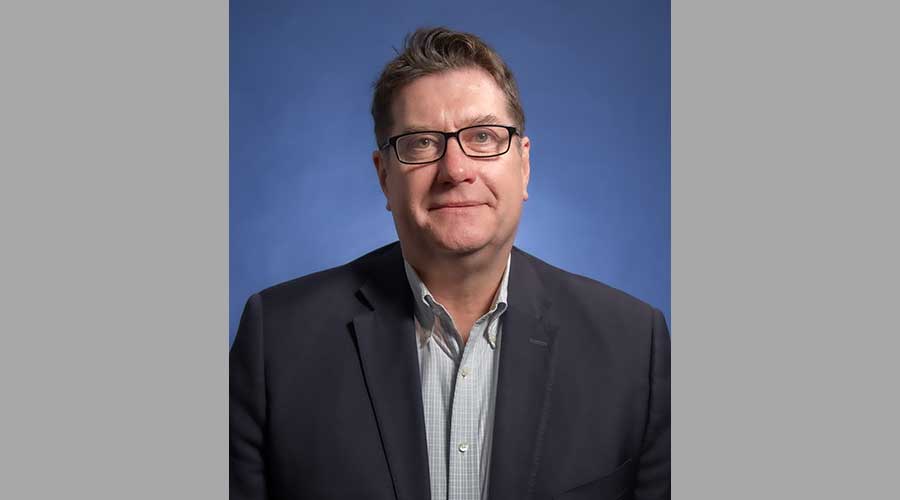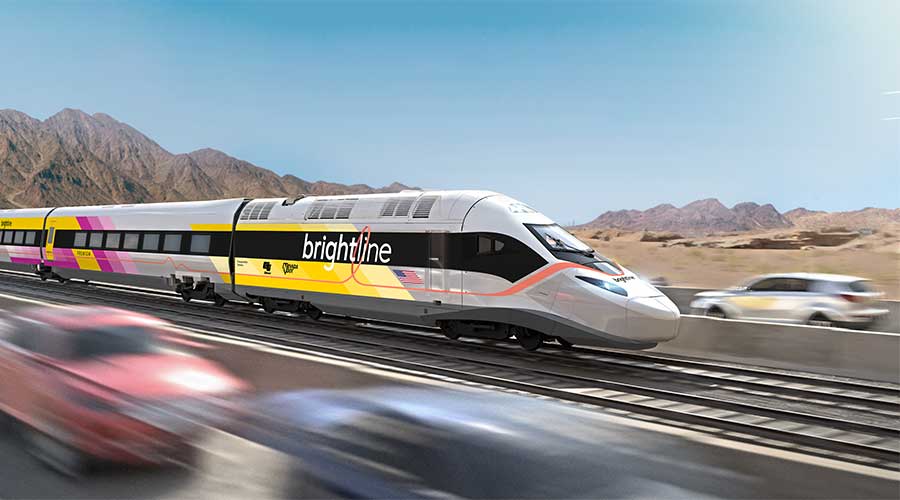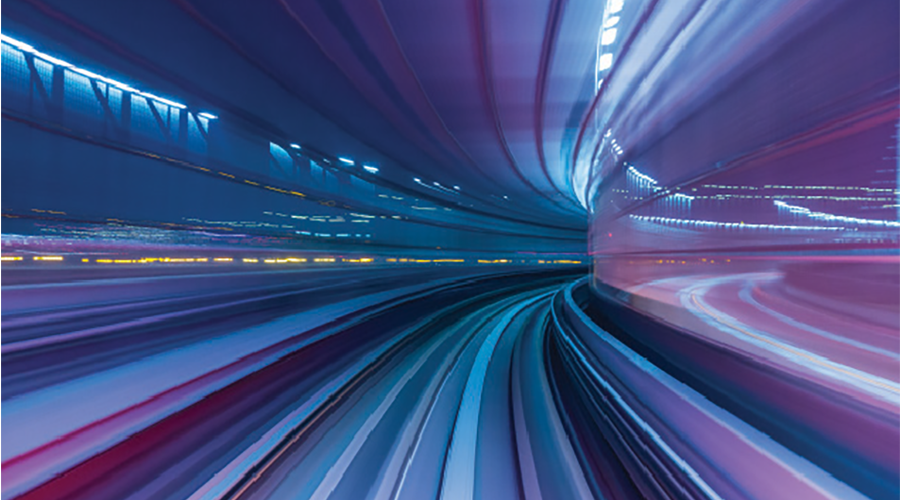Stay updated on news, articles and information for the rail industry
July 2012
Rail News: Passenger Rail
Bay Area Rapid Transit's push to invest in state of good repair, capacity improvements
By Angela Cotey, associate editor
Forty years ago, Bay Area Rapid Transit (BART) opened a heavy-rail system linking San Francisco with cities in the East Bay and northern San Mateo County, Calif. At the time, the system was the pride of the region — electric trains with state-of-the-art suspension, braking and propulsion systems zipped through tunnels, along aerial structures and on ground-level rights of way, helping to ease growing congestion in the area. Future extensions created today's five-line, 104-mile system.
But the wear and tear of the past four decades has taken a toll. BART's once-sleek and sophisticated rail cars now are the oldest in the U.S. transit industry. Stations are outdated, and escalators and elevators need to be repaired or replaced. Substructures need a facelift, too, and train-control systems have to be upgraded.
With a multi-billion-dollar state-of-good-repair backlog, BART managers could use their resources solely to meet repair needs. But expansion is critical, as well. As transit demand continues to grow, BART officials will need to increase capacity, both through line extensions and efficiency improvements.
Balancing the state of good repair and capacity needs — and finding funds for both — won't be easy. But the agency doesn't have a choice.
"It's a lot to take on, but I can't say any of this is optional," says BART Executive Manager of Planning and Budgets Carter Mau. "We can't ignore expansion or state of good repair, and if we do, we'll be behind the eight ball 10 years from now."
BART has ordered a little more than half the cars it needs, but they won't be delivered for another five years. On-time performance, which currently averages 95 percent, could be impacted in the not-too-distant future if certain repairs aren't made, BART officials fear. And daily ridership continues to tick upward at a quicker-than-expected pace — a good thing, revenue-wise, but a potential capacity issue if stations, rolling stock and train-control systems aren't upgraded fast enough to handle it.
The needed upgrades are not unique to BART; many transit agencies throughout the United States also have enormous repair backlogs. They're facing similar funding dilemmas, too. BART has estimated its state-of-good-repair needs at $15 billion over the next 20 years, $7.5 billion of which is unfunded.
For BART, the push going forward is threefold. Agency officials have to find the necessary funds to carry out repair projects; prioritize the needed upgrades and complete them accordingly; and make sure ongoing extensions are completed on time and on budget. The end result: a system-wide reinvestment that will help BART improve reliability, increase capacity and accommodate future growth as Bay Area planners seek to encourage more development around transit systems.
Consequences of inaction
The repairs and upgrades top the list. Without making them, BART will not only be unable to meet future ridership needs, it'll be hard-pressed to offer reliable service to existing passengers.
If the system isn't brought to a state of good repair, BART passengers would experience decreased vehicle speeds, slower travel times, more system failures, reduced peak-period capacity and longer wait times, according to a study conducted last year and released in May by the University of California-Berkeley.
"Many BART riders have other options, and a worsening customer experience on BART can be expected to reduce ridership," according to the report.
That, in turn, would pose other consequences for the region, such as more highway congestion and pollution, the report states.
"These systems are getting old and they play a major role in keeping our economy moving and environment clean, and just like a lot of public things, we haven't really reinvested the resources we have needed into it," says Mau. "These are some consequences we might see in the future."
BART officials will use the study findings to make their case for additional funds with the local, regional and federal governments. The agency receives an annual allocation through federal formula grants that are doled out by the Metropolitan Transportation Commission (MTC), which oversees transportation planning, coordinating and financing for the nine-county San Francisco Bay Area. Based on MTC projections, BART will receive about $7.5 billion in the federal formula funds during the next 25 years to continue maintaining its infrastructure.
But that leaves another $7.5 billion in state-of-good-repair needs to cover. At the federal level, Mau hopes the Federal Transit Administration's push to bring transit systems throughout the United States up to a state of good repair results in increased funding. For now, BART officials plan to exhaust their options at the regional and local level.
"Now is not a good time to look to Washington and ask for help," says BART General Manager Grace Crunican, who joined the agency in August 2011. "We're looking to our own resources first."
At the regional level, MTC officials are examining options to provide some relief to BART — and other transit agencies, for that matter — by implementing a regional gas tax or bridge tolls.
Riders and residents in the BART service district might have to foot some of the bill in another way. Agency officials are considering raising fares or parking fees, and/or looking into whether voters would support a ballot measure to help fund the system reinvestment. They also might sell land around stations, which would provide a new revenue source and boost ridership once the parcels are developed.
"There will be no stone left unturned as we look around for this funding," says Mau. "We'll have to get more efficient and more creative in how we do these projects."
BART officials will have to ensure they communicate those strategies to the public, as well. Riders will need to know that even though they can't necessarily see the upgrades, the improvements will provide benefits. Crunican likens state-of-good-repair investments to replacing the roof on a home; it's not glamorous, but it needs to be done.
"You'll spend between $5,000 and $25,000 putting this roof on your house and when you get done, it's likely that not one person will come by and say, ‘Hey, nice roof!'" she says. "It's much different than if you take that money and remodel your kitchen. We'll spend a whole lot of money on things that people won't see."
That's why Crunican believes it's critical that passengers and elected officials know how important it is that BART replaces the "guts" of its system, she says. The agency currently is hosting "Rust, Dust and Rail" tours to provide people a behind-the-scenes look at the BART system and explain what needs to be repaired and why.
There is one major upgrade in the works at BART that riders won't be able to miss. The agency is replacing its entire fleet of 669 rail cars with at least 775 new ones to accommodate a growing number of passengers. To be built by Bombardier Transportation, the new vehicles will feature 50 percent more doors, which will make boarding faster and easier. The cars also will sport bike racks, more priority seating for senior citizens and passengers with disabilities, interior digital displays showing the next stop and other passenger information, exterior digital displays showing the route and train's destination, and improved public-address system and onboard security cameras.
"The nice thing about the rail cars is that they are not only a reinvestment, but by doing some modifications to the cars, we can increase our carrying capacity," says Mau. "So this is also a capital upgrade."
New cars on order
In spring, BART signed a $631 million contract with Bombardier to build an initial 260 cars. In late June, the agency exercised a $266 million option for 150 additional cars. If BART ordered all 775 cars, the contract value would total about $1.5 billion.
Bombardier plans to deliver 10 pilot cars in spring 2015, then deliver the remaining 250 cars from the initial order between early 2017 and spring 2019.
By then, BART will need them, not only to accommodate more passengers on its existing system, but to serve new lines.
In 2009, construction began on a 5.4-mile, $890 million BART extension to Warm Springs, Calif. The project is being overseen by BART.
Scheduled to open in fall 2015, the Warm Springs extension is part of a larger plan to extend the BART system into Santa Clara County and the Silicon Valley.
Santa Clara County originally was going to be part of the BART system, but local leaders voted against the county's inclusion in the service district. In 2000, Santa Clara County voters approved a half-cent sales tax to help fund construction of the BART extension.
In April, the second part of that plan was put into action when the Santa Clara Valley Transportation Authority broke ground on a 10-mile line that will extend BART from the future Warm Springs/Fremont station to Berryessa, with a station in Milpitas, as well. Construction is scheduled to be complete in 2016, with service anticipated to start in 2017.
"The trick is going to be getting some of the new rail cars here before that line opens up," says Crunican.
Not all future BART service will operate with the traditional rail cars. The agency is examining different rolling stock options.
"We're really looking at serving the public with whatever the best, most appropriate mode is," says Mau.
For example, BART is building the Oakland Airport Connector, which will replace the existing AirBART bus shuttle between the Coliseum station and terminals at Oakland International Airport. The system will feature automated people movers similar to the systems used at other U.S. airports, with electrically powered trains operated on a fixed, elevated guideway. Construction on the $484 million project began in 2010 and is scheduled to be complete in 2014.
Also in 2010, BART launched construction on an extension into East Contra Costa County. The 10-mile eBART system will operate from the existing Pittsburgh/Bay Point Station along the Highway 4 median to Antioch.
The agency will operate diesel multiple units on the line rather than conventional BART trains to help save on cost. The $462 million project would have cost more than $1 billion if BART was building its traditional third-rail system. The project is scheduled to be complete in 2016 or 2017, says Crunican.
A look ahead
At this point, BART has no other extensions under way or ready to go. But that isn't stopping Bay Area residents from calling on the agency to consider adding rail service in other areas.
"We have a lot of folks that live in the county east of us, across the mountains in the San Joaquin Valley, that come out this way and have to deal with the congested highways," says Crunican.
The agency is conducting environmental work for a potential Livermore extension that would serve residents in that area.
BART officials also are considering adding a turn at the Oakland Wye to cross the bay and add more capacity at the core of BART's system.
"Our system is designed to go from one end to the other and back," says Crunican. "There's very little ability to turn back and service the urban core."
The additional capacity will help BART accommodate the 500,000 riders anticipated to be using the system by 2025 — possibly even sooner.
In 2011, the agency carried an average of 345,000 passengers per day. This year, BART already has served up to 370,000 passengers on some days, and hit a high of 399,000 one day earlier in the year.
"That 500,000 is coming up on us real fast," says Crunican.
It's further proof that demand for BART service — or any transit service, for that matter — will continue to grow right along with population and the economy. The nine-county Bay Area will add 2 million residents and 1 million jobs by 2040, the Association of Bay Area Governments projects.
Preparing for future growth
BART officials know they need to make decisions now to support the ridership of the future. Making the proper system repairs and upgrades will be a start. So will the coming capacity and service expansions.
Beyond that, BART officials need to address some important questions: What will the future BART system look like? What should BART's role be in the Bay Area economy? How can the agency evolve to meet the needs of future generations?
BART execs have started the discussion, prompted by a MTC regional plan that calls for encouraging job and housing growth around major transit stations served by BART, Caltrain and other regional transit agencies.
"We know that, as the backbone agency for transit in the Bay Area, we'll have to be the workhorse," says Mau. "We're trying to put the pieces together to determine what kind of investment will be required not only to keep the current infrastructure in a state of good repair, but also what strategic investments are needed to accommodate the regional growth."
The agency recently launched a study to analyze potential capital investments, such as an upgraded train-control system, additional crossover tracks, infill stations and new lines that could help accommodate the emerging growth pattern.
"BART is going to be evolving," says Mau. "The world BART was engineered in 40 years ago is very different than it will be in the next 40 years."


 2025 MOW Spending Report: Passenger-rail programs
2025 MOW Spending Report: Passenger-rail programs
 Gardner steps down as Amtrak CEO
Gardner steps down as Amtrak CEO
 Guest comment: Oliver Wyman’s David Hunt
Guest comment: Oliver Wyman’s David Hunt
 Women of Influence in Rail eBook
Women of Influence in Rail eBook
 railPrime
railPrime







